Recently moved from the US to become General Manager of NZ Bird Rescue at Green Bay, Auckland, our speaker Dr Lynn Miller has worked on bird rehabilitation for most of her life (https://birdrescue.org.nz/appointment-of-general-manager-of-nz-bird-rescue/). She is a past president of the International Wildlife Rehabilitation Council, and for her PhD studied the effects of crude oil ingestion in mallard ducks. This led to her involvement with bird rehabilitation in the aftermath of the Deep Water Horizon (DWH) oil spill in the Gulf of Mexico.
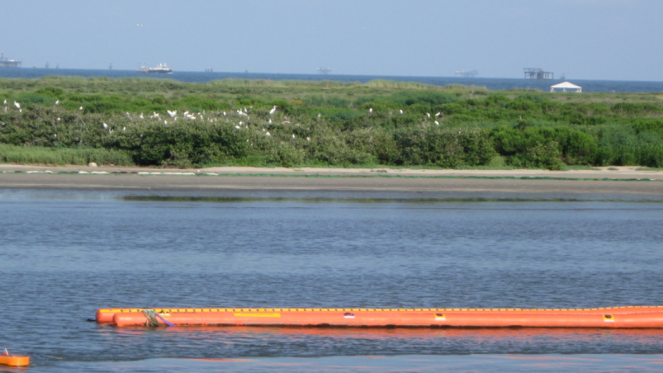 Oil rigs on the Gulf of Mexico
Oil rigs on the Gulf of Mexico
The Gulf of Mexico is the world’s largest gulf, 1.6 million square kilometres in size, with around 5,000 km of coastline. It is also is one of the most important offshore petroleum production regions in the world. According to the National Response Center, the oil industry has thousands of minor accidents in the Gulf of Mexico every year.
A diverse range of natural habitats and a correspondingly diverse array of native and migratory species are to be found in the Gulf. Hundreds of millions of migratory birds have been monitored flying across the Gulf each year.
On 20 April 2010 the Deep Water Horizon oil rig situated in the Gulf had a pipe blowout, spilling 205.8 million gallons of oil and 225,000 tons of methane into the water. Only about 25 percent of the oil was recovered. Dispersants, toxic to wildlife, were sprayed on to the water to disperse the remainder; these broke the oil down into smaller particles that remain in the water today.
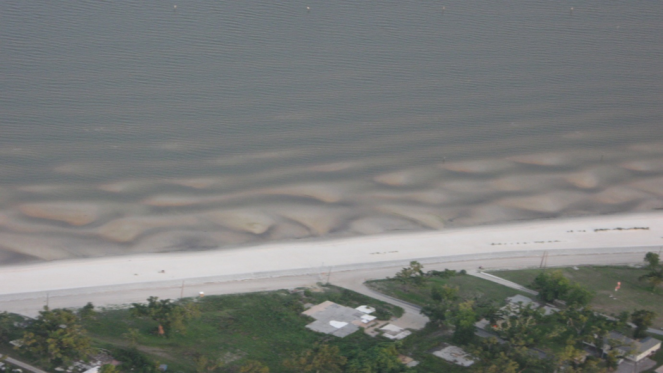 Oil particles on the seabed of the Gulf
Oil particles on the seabed of the Gulf
Eleven people were killed in the explosion, and the catastrophic effects on the Gulf’s ecosystem continue to be felt today.
Lynn was initially involved in the surveying efforts to understand the extent of the impact and how agencies such as the Humane Society of the United States (HSUS) could aid with the rehabilitation of oiled birds rescued from the spill.
Oiling of birds has immediate impacts, affecting their waterproofing and therefore heat regulation, their buoyancy, and leads to dehydration, starvation, and poisoning.
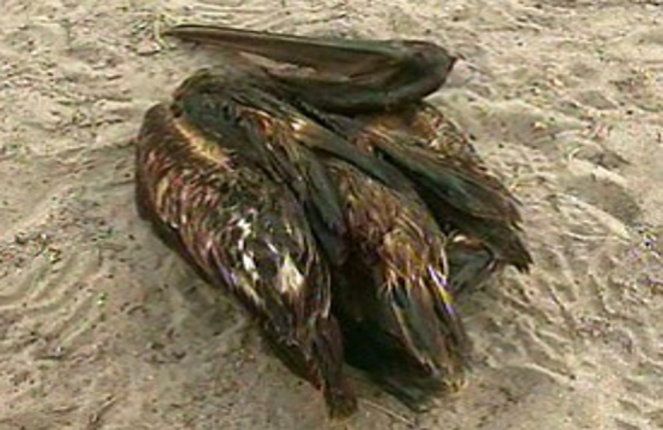 A dead oiled pelican
A dead oiled pelican
During the spill, more than 8,500 dead and impaired birds were collected, and more than 3,000 live birds were taken to rehabilitation centres (where only half survived). It is now estimated that upwards of one million birds died as a result of the spill.
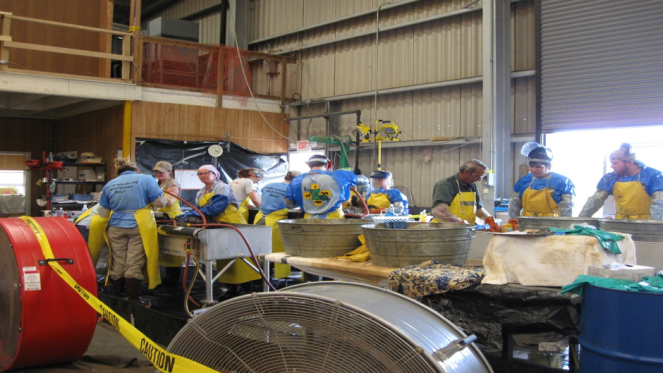 The Wildlife Response Team cleaning birds post-spill
The Wildlife Response Team cleaning birds post-spill
One of the many birds still affected by the spill is the North American northern gannet (Morus bassanus), which breeds in a number of sites in the Gulf of St Lawrence in Canada and migrates south in winter. The birds fly as far south as the Gulf of Mexico, and from February to April commence their journey north back to their breeding grounds.
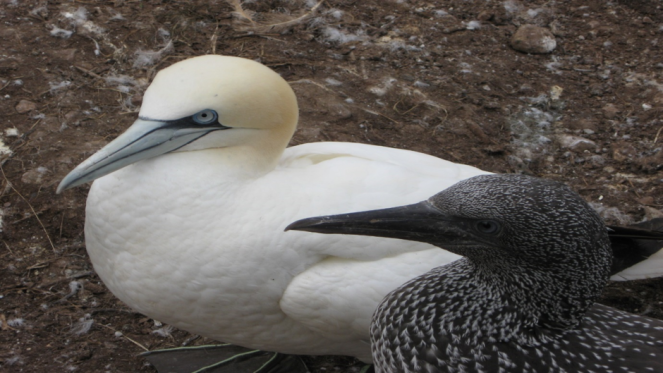 The northern gannet Morus bassanus
The northern gannet Morus bassanus
The most well-known breeding colony of the northern gannet is on Bonaventure Island in the Gulf of St Lawrence in Canada, and it was there that Lynn and her colleagues went to measure the longer-term effects of the oil spill on the returned birds.
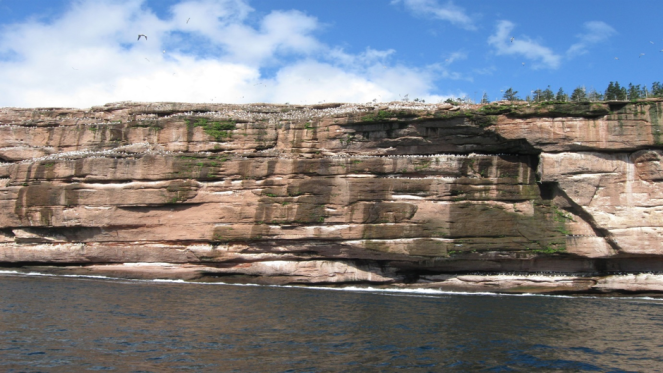 Gannet breeding colony on Bonaventure Island, Quebec
Gannet breeding colony on Bonaventure Island, Quebec
Many of the gannets in the Gulf in the year of the DWH oil spill escaped its impact because their migration started before the explosion.
However, some 25% of gannets overwinter in the Gulf or spend much of their first four to five years there until they reach sexual maturity and journey north to breed.
The findings of the research are disturbing. In the years subsequent to the explosion, those birds with continued exposure to the area of the DWH spill have failed to breed on their return to the breeding colony on the island. It’s not that the birds’ breeding is unsuccessful; the birds simply show no sign of going through the normal process of preparing to breed.
The researchers also saw a 25% loss of bird numbers in their study population in the first year after the spill.
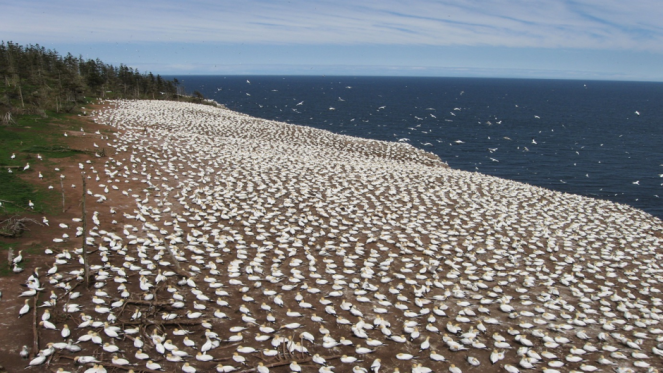 Gannets at the breeding colony on Bonaventure Island
Gannets at the breeding colony on Bonaventure Island
But perhaps the biggest challenge to the colony is that concurrently with the effect of the spill, breeding has been impacted by the reduction in the birds’ available food supplies. Speculation is that warmer waters drive the fish stocks deeper, where they are not accessible to the diving birds, or into other areas altogether, where the water is cooler.
In summary, Lynn says: “this is a complex picture of interlocking impacts from several sources – all shall we say, anthropogenic in origin”. It remains to be seen whether the birds have sufficient resilience to survive these negative impacts on their habitats.
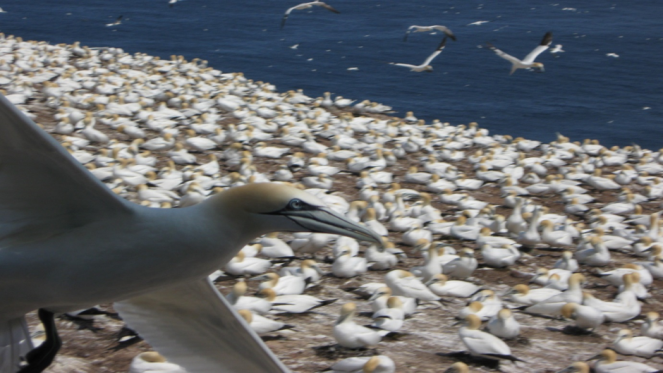 All photos: Lynn Miller.
All photos: Lynn Miller.
